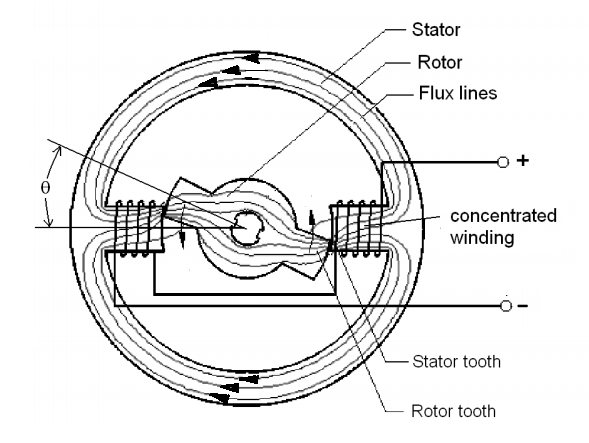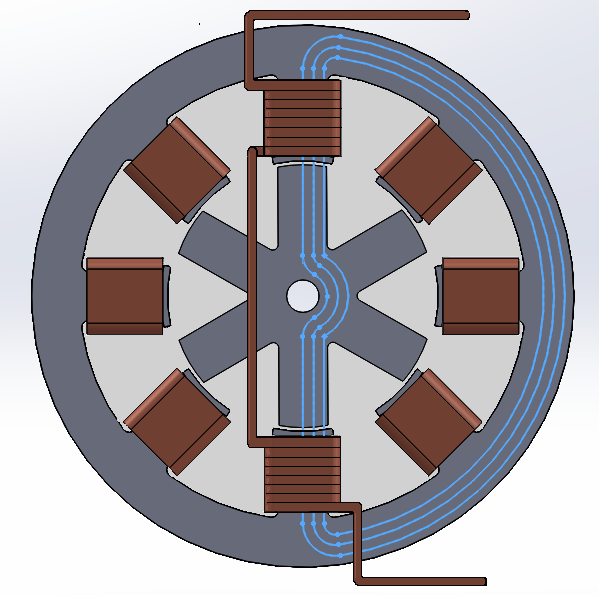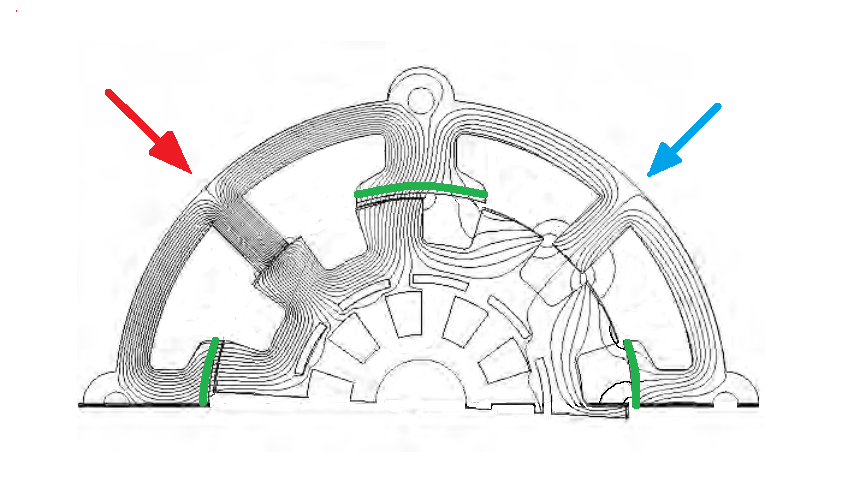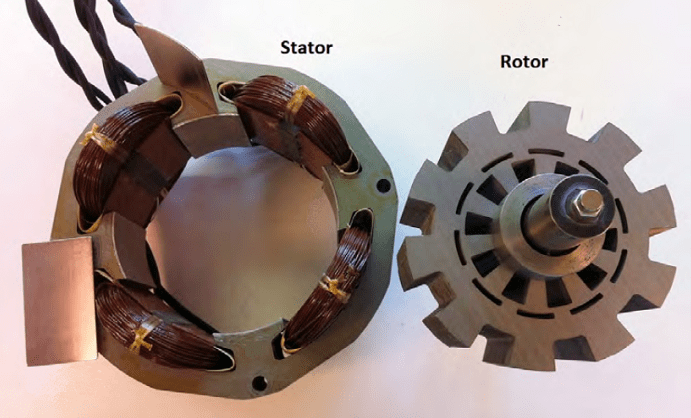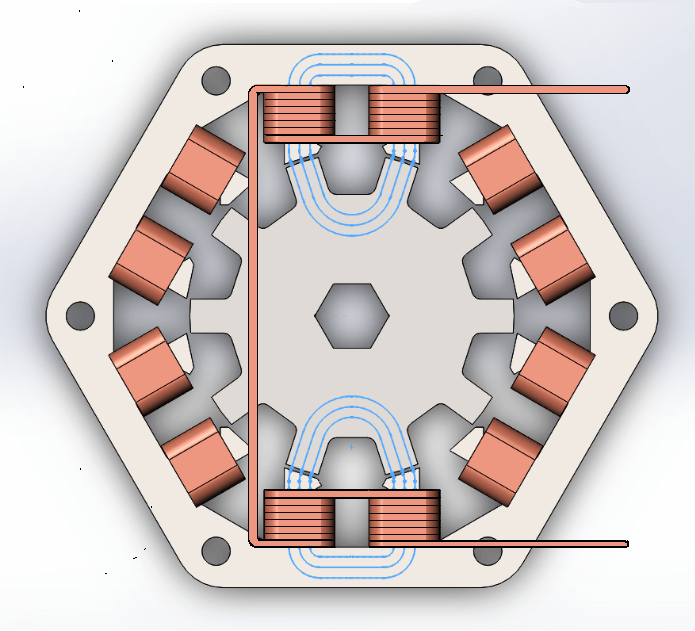Username1
100 W
- Joined
- Nov 26, 2013
- Messages
- 168
I found this paper about an interesting type of motor. https://fdocuments.in/document/a-new-two-phase-homopolar-switched-reluctance-motor-for-electric-vehicle-applications.html They actually researched it specifically for electric vehicles like ebikes and escooters.
It has some interesting features. It's a switched reluctance hub motor with an axial flux design (pancake motor), but the flux does a 90 degree turn, meaning it has a radial rotor. The motor is inherently single phase and homopolar, meaning it only uses one winding. In the paper, they stack 2 side by side (and add a stepped air gap) for the purpose of self starting.
I would argue a single phase version is more interesting as it's even simpler, and i personally don't see the need for self starting on ebikes or electric kick scooters. It seems easy enough to give a pedal or kick before taking off, and most scooters already deliberately add this as a safety feature.
It seems like an extremely simple and durable design. Being switched reluctance, it has no magnets or conductors in the rotor, meaning the rotor can't overheat. Another benefit of switched reluctance is no drag when coasting/turned off, which is a great plus. With the simple rotor and single winding per phase, it looks way easier to build. I'm not sure how it compares on power density but thought it was a very clever design. What do you think?
It has some interesting features. It's a switched reluctance hub motor with an axial flux design (pancake motor), but the flux does a 90 degree turn, meaning it has a radial rotor. The motor is inherently single phase and homopolar, meaning it only uses one winding. In the paper, they stack 2 side by side (and add a stepped air gap) for the purpose of self starting.
I would argue a single phase version is more interesting as it's even simpler, and i personally don't see the need for self starting on ebikes or electric kick scooters. It seems easy enough to give a pedal or kick before taking off, and most scooters already deliberately add this as a safety feature.
It seems like an extremely simple and durable design. Being switched reluctance, it has no magnets or conductors in the rotor, meaning the rotor can't overheat. Another benefit of switched reluctance is no drag when coasting/turned off, which is a great plus. With the simple rotor and single winding per phase, it looks way easier to build. I'm not sure how it compares on power density but thought it was a very clever design. What do you think?


